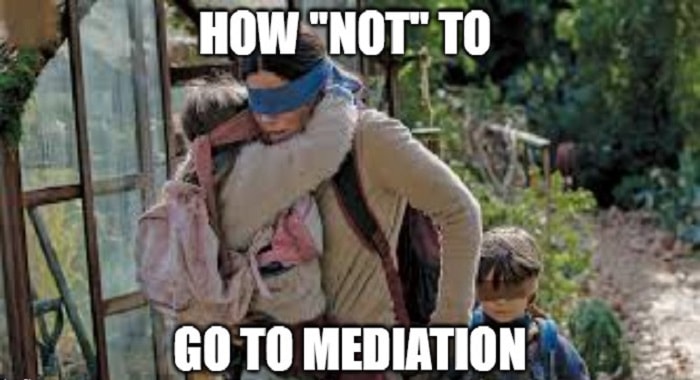This article aims to help you understand how to write a perfect witness statement for family court. You don’t have to be a lawyer or have a law background to write a witness statement. It is a tough thing to do for a layman but with this guide, you will understand all that you need to craft your statement without strain.
What is a witness statement?
First, it is important to understand a witness statement. It is a document that records the evidence that a witness would want to reveal to the court in support of his party’s case.
When writing a witness statement, there is no standard format but it should carry all the details as we will highlight later, on one side of an A4 paper, handwritten or typed.
It is worth noting that witness statements are for the public record and can be made accessible to all the parties involved in the case during court proceedings where they are needed.
Different types of witnesses may testify in a family case such as in a child custody case. These are people who are connected to the parties involved or an expert chosen by the court based on the nature of the case. All these parties may be required to submit their witness statements to the court for use during the court hearing or trial.
Type of witnesses in a family court
A witness statement in a family court can come from different persons who are involved in the process of the case. That includes an eye-witness, a character witness, and an expert witness among other witnesses.
Eye witness
An eyewitness is someone who has primary evidence of what he or she has observed. If there was a physical fight or violence before separation, an eyewitness would be the best person to provide a statement of what he or she observed. There can be more than one eyewitness for the evidence to have weight in a family court and with that, the judge will check the consistency in the witness statements to affirm the facts that have been stated by the witnesses.
An example of an eyewitness statement would look like this:
“I was in the scene when Person A attacked Person B where he/she also turned to the children and caused a lot of commotion before party C intervened and stopped the violence.”
Character witness
Character witnesses are also useful in a family court and they help the court with evidence on the behavior of the defendant over time. Their witness statements are solely meant to enlighten the court on the morality, character, and behavior of the party for which they are testifying for. They can be neighbors, family members, or any other person who has known the defendant for a good period of time.
An example of a character witness statement would look like this:
“I have known person A for more than 10 years and we have lived in the same neighborhood since I got to know him/her. He/she is a polite and courteous person who treats everyone with dignity. He/she has also lived and cared for his/her children and brought them up in a dignified manner. For the past 10 years, I have lived in the same neighborhood with him/her, I have never witnessed any cases of abuse or domestic violence….”
Expert witnesses
These are professionals who give their witnesses based on scientific findings. They can be medical or clinical experts, psychologists, physicians, or any other therapist who may be involved by the court.
An expert witness statement is so valuable to the court and the court treats them as professional evidence drawn from scientific findings by the expert.
When is it necessary to write a witness statement?
The court will guide you to write a witness statement when it is needed. You will be given a deadline to abide by and submit your statement that is signed. This may happen during the first hearing or when the case is on the trial.
What to include in a witness statement?
A witness statement should be well-structured and should include only the necessary details. It should include what you saw if you are a witness in this case, what you heard, or what you did. However, you don’t need to include gossip and rumors in your statement.
How to write a witness statement
Before you craft a witness statement, you need to know that your statement may be the main evidence in the court proceedings. It is your opportunity to highlight and describe everything crucial in the case without bias or a lot of criticism of the other parent. In that regard, you should back up all the important details with evidence. You, therefore, need to structure your witness statement to include:
1. Header details
Your witness statement should have a heading. That is “WITNESS STATEMENT” and the title of the proceedings. In the heading, you should also capture the name of the court that is handling the case, the case number, act name of your application, the name of the applicant, and the names of all the parties in the case.
Sample header and format
IN THE (ABCB) FAMILY COURT
CASE NUMBER:
IN THE MATTER OF THE FAMILY LAW ACT 2021
IN RESPECT OF (CHILD X) BORN ON (DATE Y)
BETWEEN:
APPLICANT A (applicant)
-and-
RESPONDENT B (respondent)
WITNESS STATEMENT OF
(Full Name)
1. Paragraph……………. (Introduction of yourself)
2. Paragraph…………….
3. Paragraph…………….
4. Paragraph…………….
5. Paragraph…………….
6. Paragraph…………….
7. Paragraph…………….
Signed: ………………………………………
Your Name: ……………………………….
Date: …………………………………………
2. Identifying yourself
As a person writing the witness statement, you should introduce yourself in the first paragraph of your statement as in the format:
“I (your full name), (of occupation), and (address) will testify on behalf of my party on what I believe is true to the best of my knowledge….”
While identifying yourself, you should capture all the details that include:
- Your official full names.
- Your personal or business address.
- Your occupation or position in your company where necessary.
If you may want to conceal some of your information such as your personal address, you can only do that with the consent of the court. This is where you don’t want the other party to have access to your address.
This is part of the introduction and is important for the court to have these details and to know how you know the party that you are testifying or witnessing for.
3. Preliminaries and source of evidence
Before delving into the main facts of the case, it is important to highlight some of the key details that would help the court understand why you are witnessing for your party.
That is Your source of information. i.e., “the facts that I have stated in this statement are within my knowledge and where I have stated otherwise, I have indicated the source of that information.”
Your information could be from your knowledge or a third party. Where you state information that is not within your knowledge, it is important to acknowledge the source of that information. Remember, the court may use your witness statement as primary evidence in the case. Therefore, it is valuable to keep all the details up to the point.
4. The narrative
This is the body of your witness statement. It is the most important stage where all the facts and information are stated. In this section, you need to stick to important points to avoid discrediting your party with a lot of blunders.
There is no “one size fits all” format to draft your story. Everyone has his or her way to do so. However, it is important to keep all the facts flowing and in chronological order. You should be precise and concise in your presentation throughout your narrative. At this stage, it is important to observe the following:
Be brief and to the point
Avoid using long sentences and lengthy paragraphs when presenting your story. Doing that may become boring to the reader. The readability of your text should be well maintained by using short sentences and paragraphs.
Proper punctuation
To keep the reader on track, you need to punctuate your narrative properly. Omitting some quotation marks may lead to wrong interpretation and you should avoid that where possible.
Introduce documents
Where it is necessary to introduce or explain some documents, feel free to do so. Since your witness statement should have important documents and pieces of evidence, you may want to explain some of the documents in the body of your narrative.
Number your paragraphs
As in the format that we highlighted above, you may number your paragraphs for easy reference by the court and by yourself during the proceedings. This will also serve to keep the chronological order of the events that you are presenting to the court.
Proofread your statement
Your statement should not have information that is difficult to understand. Any person who might want to read your witness statement should understand every detail from the beginning to the end. They should not have to search for other supporting documents to understand what you have written.
It is important to write your witness statement earlier enough so that you have time to review and proofread before submitting it to the court. You should also ensure that your narrative is free of jargon where necessary.
Other things to note when presenting your narrative;
Since this is where all the information is captured, you may want to include everything that is within your knowledge.
While doing that, it is also important to note the following:
- Whenever you refer to someone else in your narrative, it is important to give their full introduction that captures their full names, addresses, their occupation, and why you have mentioned them in your narrative.
- Any opinions that you may not prove or have full knowledge about may mislead the court. In that case, it is wise to state to the court what you doubt, or don’t have full knowledge about by yourself.
- If you refer to any institution or company, you should include their full names, addresses, and the type of business that they are engaged in.
- Where you think might raise some questions, you are free to write your answers to those questions to avoid making your statement complicated to the judge or the other party.
5. Witness statement declaration
A witness statement must end with a declaration of truth. This is where the person stating the facts affirms that the details and facts that he or she has presented are truthful. It is an offense to give false information in a witness statement as that would amount to contempt of the court and can attract a fine or even imprisonment. Below is an example of a witness statement truth declaration:
“I do believe that all the facts that have been presented in this statement are true to the best of my knowledge.”
Signature
After you are done with your narrative, the last part after the declaration is to sign your statement. You should write your full names, then append your signature, and the date of signing the document.
6. Attach important documents
Whatever important documents that you mentioned in your witness statement should be attached at the end of the statement. These could be contract letters, letters of admissions or medical appointments, or any other valid document that would be useful in a family case. These documents could also be pieces of evidence that you have mentioned in your source of information.
When attaching those documents, you should label the top of each document with a letter starting with letter A. The subsequent documents should bear the subsequent letters of the alphabet in order.
Conclusion
This is a useful guide for anyone who wants to write a witness statement for a family court. Once you have a grasp of the format as in the sample attached, it is easier to go about detailing all the happenings and things that you know about the case.
It is a worthwhile cause to present your statement in a manner that would not mislead or confuse the court.
Remember, your statement may be used as primary evidence in the court proceedings. Therefore, at the end, you can attach all the important documents or evidence that you may have mentioned in your narrative.





